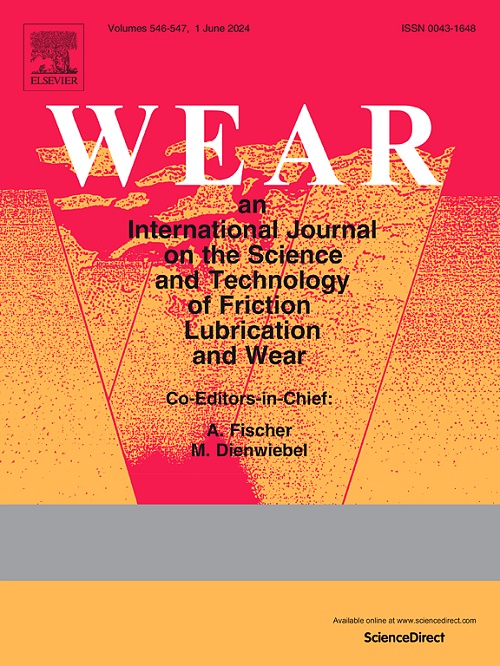Do electrification-temperature effects deteriorate ZDDP tribofilms in electric vehicles transmission? Insights into antiwear mechanisms using low-SAPS oils
IF 5.3
1区 工程技术
Q1 ENGINEERING, MECHANICAL
引用次数: 0
Abstract
This study aims to provide the answer to the crucial question regarding the combined effects of electrification and temperature on ZDDP tribofilm durability. The current investigation aims to understand the tribofilm formation mechanism on electrified steel surfaces, helping mitigate the adverse effects of current leakage in electric vehicles (EVs) transmission. A low-SAPS oil was formulated using polyalphaolefin oil (PAO6) and 0.5 wt% zinc isopropyl-isooctyl-dithiophosphate (ZDDP, type T204). Additionally, the commercially fully formulated transmission oil for EVs was used as a reference oil to compare. The current-carrying friction tests were conducted under various DC currents (2–8 A) and temperatures (50–200 °C) at 250 N and 10 Hz using an electrified SRV-IV tribometer. The results demonstrated that the electrical contact resistance (ECR) and coefficient of friction (COF) signals were dynamically compatible, indicating the tribofilm behavior. Notably, the antiwear properties of ZDDP oil were enhanced by up to 58 % compared to the reference oil under various currents at 150 °C. The HRTEM results revealed that ZDDP oil produces a thick antiwear tribofilm up to 654.8 nm, while the reference oil forms a thin tribofilm up to 37.1 nm at 8 A and 150 °C. The electrification effects do not deteriorate antiwear ZDDP tribofilms due to their higher formation rate than the scrape-off rate. Accordingly, these findings will help synthesize new organic oil additives (low-SAPS) and open future opportunities for discovering green alternatives to enhance the durability of EVs transmission.

求助全文
约1分钟内获得全文
求助全文
来源期刊

Wear
工程技术-材料科学:综合
CiteScore
8.80
自引率
8.00%
发文量
280
审稿时长
47 days
期刊介绍:
Wear journal is dedicated to the advancement of basic and applied knowledge concerning the nature of wear of materials. Broadly, topics of interest range from development of fundamental understanding of the mechanisms of wear to innovative solutions to practical engineering problems. Authors of experimental studies are expected to comment on the repeatability of the data, and whenever possible, conduct multiple measurements under similar testing conditions. Further, Wear embraces the highest standards of professional ethics, and the detection of matching content, either in written or graphical form, from other publications by the current authors or by others, may result in rejection.
 求助内容:
求助内容: 应助结果提醒方式:
应助结果提醒方式:


